We’re living in the future. Nerds are the new kings, selfie sticks are a thing, and people spend 10 minutes Instagramming their dinner.
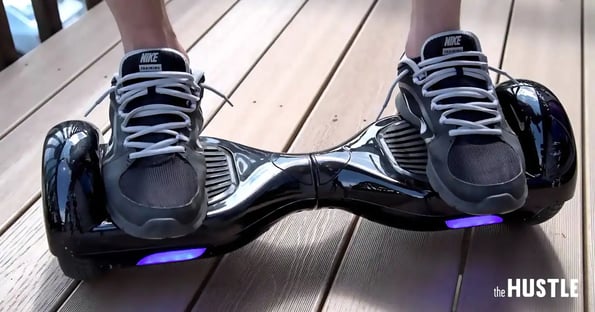
Even though we wanted flying cars, we got 140 characters, real life hoverboards, drones, and a watch that’s pretty much just a cell phone strapped to one’s wrist.
Some of this shit is awesome, some is just shit, and some, well, we’re waiting for them to smooth out all the quirks.
But here’s the thing: however much fun the latest toy is, there’s something all those fancy companies with their glossy million dollar ad campaigns have forgotten to consider.
Does their product pass the Douchey or Cool* test?
*copyrighted, The Hustle
It’s a question as old as time. Breaking down this amazingly concise phrase, we’re looking at whether the cool factor of using these cutting edge gadgets outweighs the awkwardness of little girls pointing at us in the street.
In this episode of The Hustle, we’re looking at “electric self-propelling transport devices.”
By this we mean hoverboards and electric skateboards.
The Hustle is based in San Francisco – basically the tech epicenter for the whole world (China might disagree) and we see a lot of hoverboards rolling around the streets.
And in viral videos. Like this Aladdin dude:
They’re on every other website, and even at awards shows.
But will they pass our test? Does their coolness outweigh their douchiness?
Let’s find out…
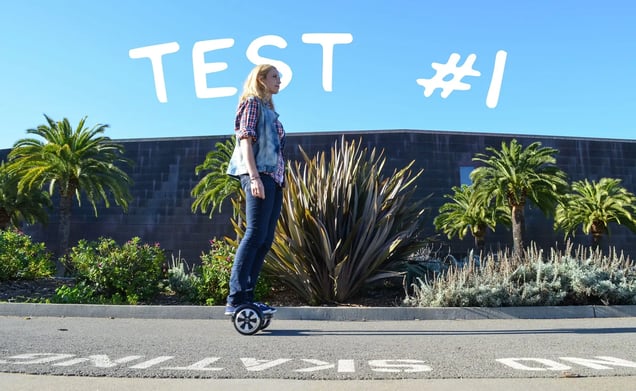
The MonoRover R2 Hoverboard, $599 from MonoRover
First impression
F**k, this is heavier than I expected. And bigger. When these are at people’s feet you don’t realize the dimensions. But it seems pretty idiot-proof – there’s only one button to push. And oh my god, does it get attention. It’s not even fully charged and the whole office – and the adjacent one – are crowding around. “I’ve seen that on TV!” “Can I try it?”
Ease of use
If you’ve tried a Segway, this is a no brainer. If not it will take you around five minutes of pinwheeling and arm spinning to feel comfortable and balanced. The trick is positioning your body weight evenly, and using shifts in weight to move you from side to side. Toes down, you move forward; heels down, your move backward.
I liked leaning to one side and moving around in circles.
A green bar on the foot display shows the battery life, and you get 10-12 miles per three hour charge. Hills are no problem – in fact, they’re pretty f**king awesome – as you nonchalantly zoom past people slogging away. Curbs can be more tricky, as they mess with your balance, and tram tracks need to be taken slooowly. Trust.
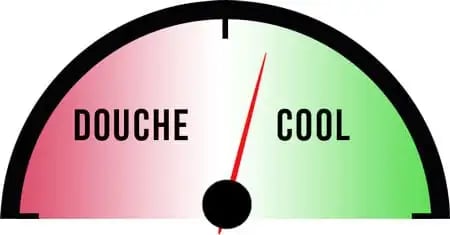
Douche Factor
It’s an adult version of kids LED sneakers, and they weren’t that cool the first time around. However you spin it, when you use a hoverboard you’re rolling around in public with flashing blue lights attached to your feet.
You’re not Marty McFly, and trying to pretend you still got it makes you that awkward person at a party who double dips their chips. “Look at me, look at me!” you shout, as everyone edges away.
Cool Factor
It’s like walking… but fun! And you don’t have to use your legs. Don’t bother carting bags around airports and conferences, open yourself to a stress-free experience. Plus, so much attention. People smile at you in the street, and come up and ask you questions.
You’re an early adopter; getting into this before it’s mainstream, and that gets you respect. You have an informed opinion… and you have fun with it.
Celeb users
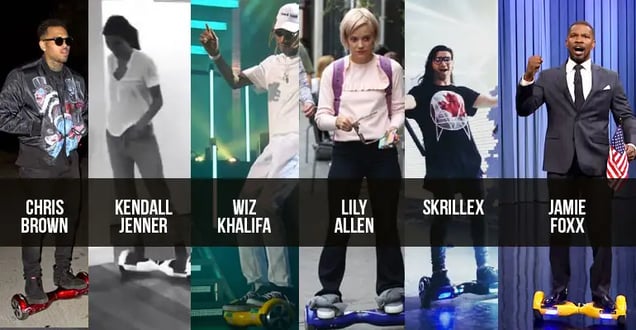
How does it work?
The board uses two motors to power you along and the electronics measures your weight with sensors inside the foot stands.
Two blue LED lights in the back glow when you reverse and turn. There’s no age or height limit (advised not to use if over 250 pounds) and as long as you avoid water, it’s not easy to break.
What you need to know
The first consumer hoverboard came to market in 2014. Since then, a bunch of clones have appeared, all looking pretty identical. This is because a lot of them ARE. Most of them are made in the same Chinese factories and rebranded, so you can pay anywhere from $200 – $1,800.
And yes, we know “hover” is a misnomer. They roll. But who doesn’t like rolling?
Any other benefits?
Considering this is a “two wheel transporter” I wanted to figure out if you could justify using a toy as a form of transport. I looked at the numbers for my commute:
Per week I spend around $75 if I use Lyft Line; $40 if I use Scoot, a San Francisco based scooter sharing startup; and $0 if I walk.
It’s 15 minutes by car or scooter, and over an hour if I walk.
3 months Lyft Line: $900
3 months Scoot: $480
An investment of $600 doesn’t seem crazy. The reality? My trip home on the hoverboard (an estimated 30 minutes using bike routes) took over an hour. This is partly because I went through The Golden Gate park after sunset, and trees and uneven ground slowed me down. If I lived somewhere flatter, this could be a win, but for my location it’s not a viable daily commute option.
Plus, hoverboarding with a backpack and laptop takes away the fun factor, and turned something recreational into work.
TESTED BY ZARA STONE
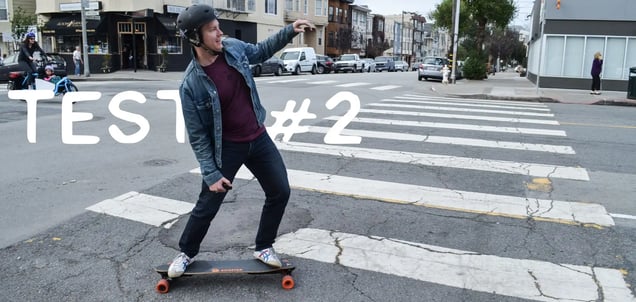
Boosted Board, $999 from Boosted
First Impression
The Boosted Board is as much a toy as a $1,500 mountain bike… basically, not at all. It was more heavy duty than I expected. Much faster, too. I’m amazed at the acceleration. Holy hell, this thing accelerates fast.
Because of its fast acceleration and slick design, the immediate comparison is to a Tesla. The wooden deck was bendy, but sturdy. Loved the orange wheels.
Ease of use
If you know how to ride a longboard skateboard, normal skateboard, or snowboard, then you won’t struggle with riding a Boosted Board. I’ve been a skateboarder for years, and picked this up quickly.
However, the learning curve is steep if you aren’t at least OK at board sports. The issue is the board’s speed. If you’re not comfortable cruising at push speed, then you won’t like this board. I cruised at 20 MPH and above. What’s scarier is slowing down. There are brakes, which are a godsend, but you feel unbalanced when you start pressing brake on the remote. It’s unnerving and can throw you off.
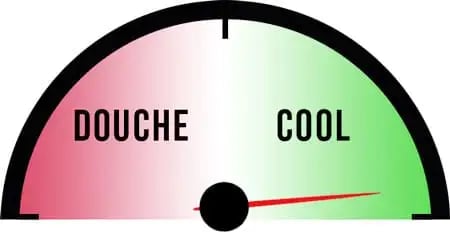
Douche factor
Low.
Look, you’re riding a bright orange skateboard uphill at 20 miles per hour. People stopped me at every corner. Thankfully, the board isn’t loud, or the douche level would increase exponentially. The only downside is that the battery didn’t last that long. One charge gave me 25 minutes of juice. Granted, I was flying up and down hills, but I still wish it lasted longer.
The only time I could feasibly seeing this board falling into the douche category is if it ran out of battery, and I’d have to carry an electric skateboard up a hill like a big ‘ole douche.
Cool factor
High. Very high. Not Clint Eastwood-high, but close. The Boosted Board is amazing. It’s that simple. Even if you’re riding down the block while blasting Kid Rock and wearing a Mitt Romney t-shirt, it’s still cool. No amount of douche could outweigh the coolness of the Boost.
Celeb users
How does it work?
The Boosted Board’s secret weapon is its wireless remote control. The remote fits in the rider’s hand like a Wii controller. There’s a trigger to increase the speed or go in reverse, which is how you stop. The controller also has the option to switch to different speed adjustments, so your top speed can be between 10 MPH or 22 MPH, depending on your skill level.
What you need to know
Boosted has three different models: the Single ($999), Dual ($1,299), or Dual+ ($1,499). The major difference amongst the three is the power output (speed). The Dual+ is the fastest, and what I used for the test. With a top speed of 22 MPH, The Dual+ has four different speed adjustments, with level two and three being the equivalent to the top speeds of the Single and Dual boards.
I felt the slower speeds were too slow and underwhelming. I highly recommend shelling out the extra cash to get the Dual+. It’s worth it.
After riding the board for a week and doing some research on Reddit, it seems like Boosted is the most durable and trouble-free of all the electronic skateboards. I had a few wipeouts and pushed the motors pretty hard up hills (I’m 220 pounds), but it handled everything perfectly.
Any other benefits?
I’m never taking my dog on a normal walk again. I can see this being a decent way to commute to work as long as your commute is under four miles or so.
TESTED BY SAM PARR
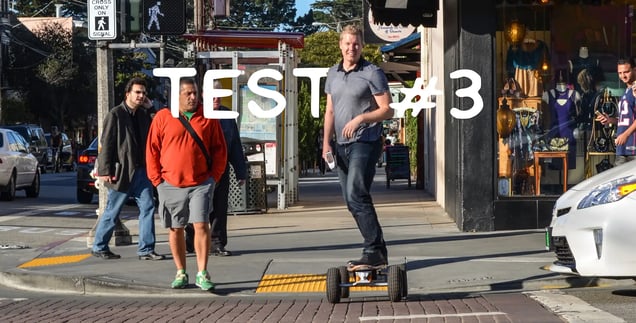
Munkyboard, $1,249 from Munkyboards
First Impression
Huge. This thing is huge. The tires are massive and the board is long and wide. I feel much taller when standing on it than when I was on the Boosted Board. It’s heavy, but not in a good way. In a clunky way. It took two people to carry the board down the stairs to the street. It’s as fast as the Boosted Board, but not as smooth. Also, the remote. It’s like a ’90s video game remote – colorful, cheap, and plastic with a clunky design.
This thing is fast, but not powerful, and it’s difficult to maneuver. I tried riding up a short grassy hill but stalled halfway up.
Ease of use
One phrase came to mind after riding the Munkyboard: death trap. This thing is big, fast, tough to turn, and very difficult to balance. Unlike the Boosted Board, the remote doesn’t allow gradual acceleration. It felt like I could only go the top speed or nothing, which made the ride jerky.
This was not a jump-on-and-go machine. In a world of simple Apple products and intuitive design, I guess I got use to doing things without the directions. I had to read them a few times before I knew how to work the board. The board wasn’t tough to figure out, just not overly simple like the Boosted Board.
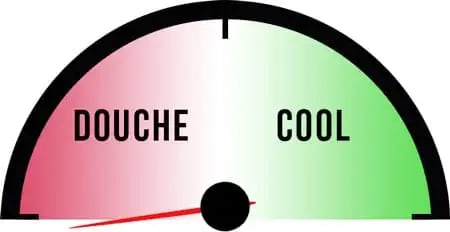
Douche Factor
High. It’s the Hummer of electronic skateboards. But not the Arnold Schwarzenegger kind of Hummer. The H2 kind. The yellow one. Guy Fieri would ride a Munkyboard. Jimmy Buffett will eventually write a song about the Munkyboard. TGI Friday’s would serve the Munkyboard as an appetizer if it were edible.
Cool factor
Low. About as cool as a Jeep with massive dirt tires. Yes, it can easily drive on gravel though some grass, but when riding on the streets (which is 99% of the time) you look like an awkward douche. Plus, I can see myself easily breaking this thing, as it doesn’t feel durable.
Celeb Users
Dog the Bounty Hunter, Guy Fieri (most likely)
How does it work?
Like the Boosted Board, the Munkyboard has a wireless remote that controls the speed. However, the Munkyboard doesn’t have a braking system or smooth acceleration. You pretty much just pull the trigger and you’re off.
What you need to know
It felt like a cheap Chinese knockoff. Definitely not worth $1,300. The douche outweighs the cool by a massive amount.
Any other benefits?
The Munkyboard was a big ole pile of douche.
TESTED BY SAM PARR
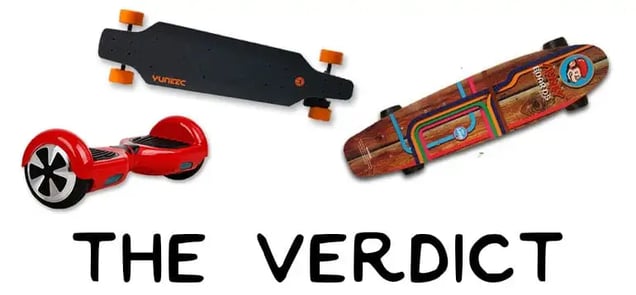
We’ve said it before, but it’s worth repeating. The Hustle is all about seeing through the bullshit that companies push our way and getting to the reality beyond the hype. We’re sick of being sold to.
Our generation sees a crazy amounts of targeted ads and we’re understandably cynical. But when it comes to hoverboards, we can’t help but place them – in general – in the cool category, however much we’d like to call them out for douchiness. They sound douchey on paper and sure, some aren’t there yet, some may never be there, and some are so good we cry a waterfall of Facebook likes while we scour our couches for extra change.
We’re not ready for the future – yet – but with Boosted Boards leading the way, we’re rolling our way towards a trend of high-class, low-cost personal transporters that live up to expectations in every way.
For now, we recommend the Boosted Board if you’re a skateboarder. Coming in at second place is the Monorover; fun if you work somewhere with smooth sidewalks, and have extra cash lying around.
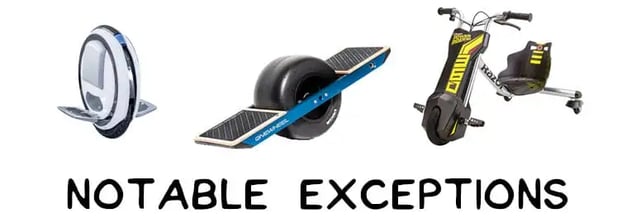
The Hustle team has to spend our days working, as much as we’d like to call rolling around on wheels “a valuable use of time.” There are many other products out there we didn’t test in this story, and we wanted to give props here.
Ninebot Electric Unicycle, $810
Props to Ninebot, as they bought Segway last year, so you assume they have the technology to make this contraption a serious device. Top speed is around 15 MPH, but it comes with a reportedly long learning curve. Knock offs can be purchased for around $300.
Verdict: Would like to try.
The Onewheel, $1499
This is a lot of fun to play with, and has a sturdy well-built design, which comes with a high price tag. The Onewheel team says this is designed for sports – not commuting – and can reach speeds of 15 MPH.
Verdict: Would like to try more.
Razor Power Rider Electric Tricycle, $144
Speeds of 9 MPH, and a 40-minute range can’t make up for the fact that any riders will fail horribly at being badass. Drifting sounds fun, but this screams “awkward tween boy toy”, which is basically who it’s targeted at.
Verdict: Complete fail.
